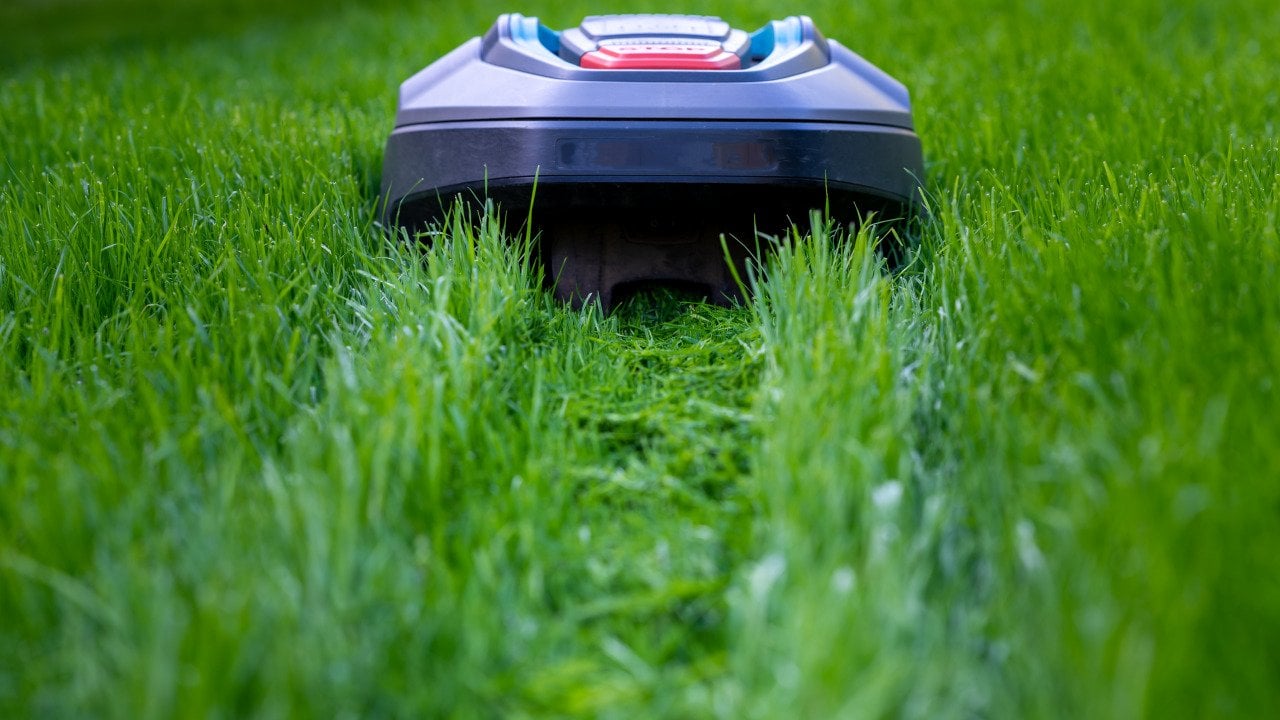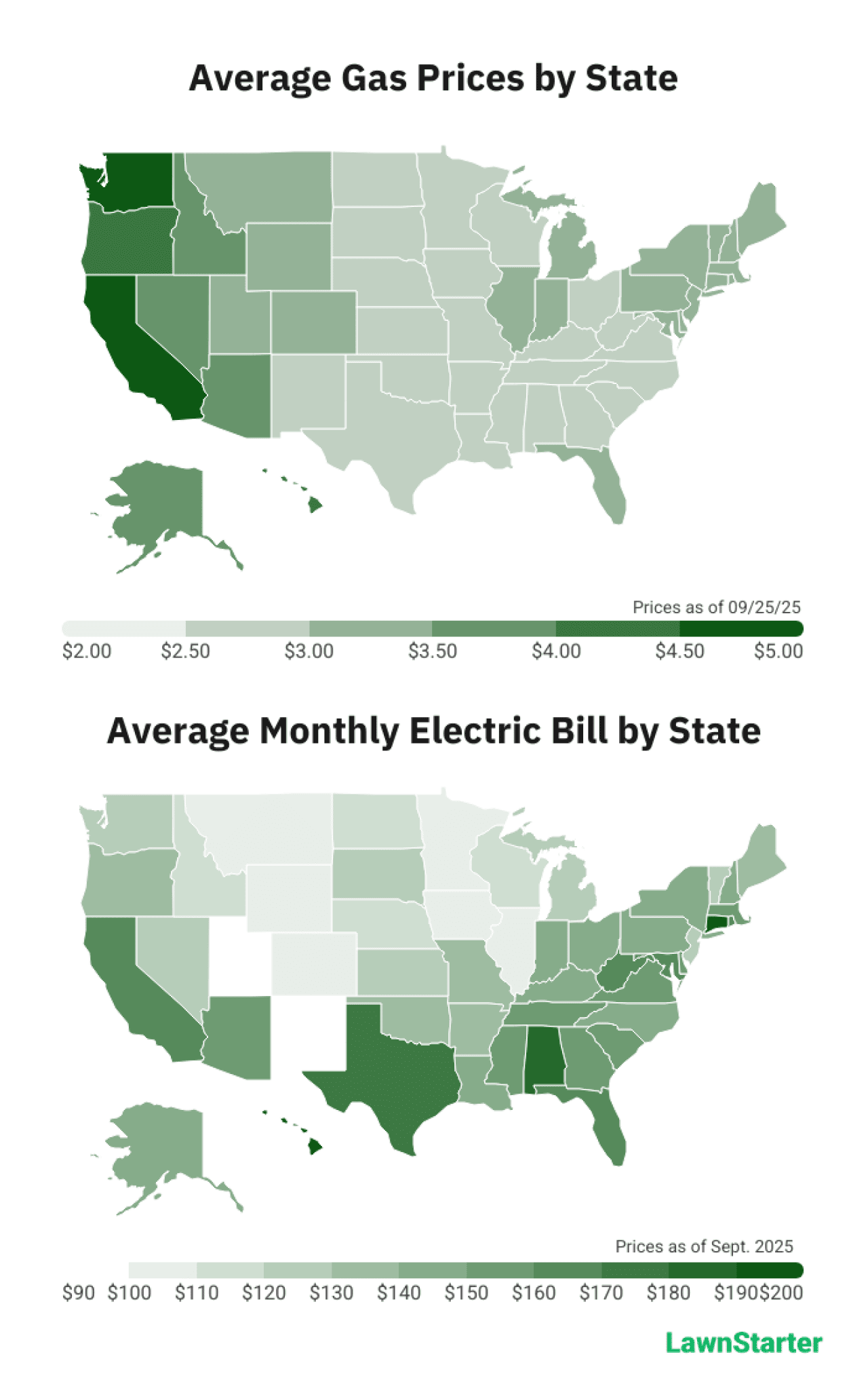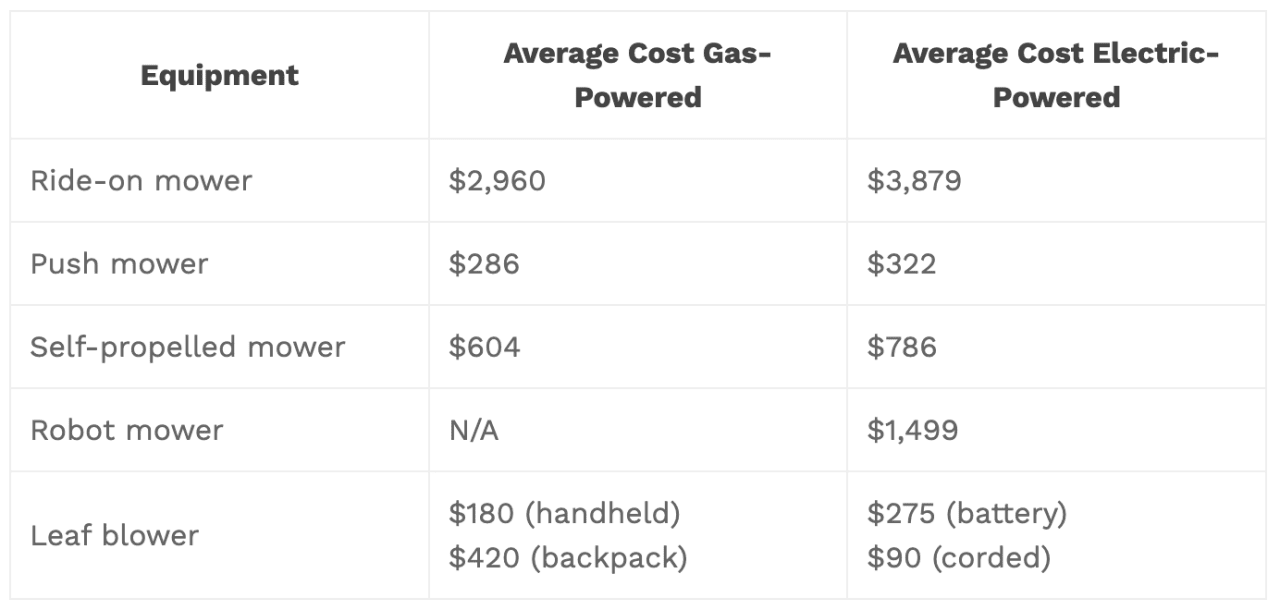Silence of the lawns: How noise ordinances, gas equipment bans and robot mowers are changing yard care

FrankHH // Shutterstock
Silence of the lawns: How noise ordinances, gas equipment bans and robot mowers are changing yard care
Weekend mornings are a lot quieter this fall as more municipalities restrict or ban loud gas-powered lawn mowers and leaf blowers. And for a truly purring mower, robot mowers can cut grass while you sleep.
Welcome to the “Silence of the Lawns.”
“We went electric last year with the mower, edger, and blower. So much better,” says Carl Swirsding, of Los Altos, California. “Easier to use, no hassle with gas or starting the damn motor. No oil changes, no air filters or spark plugs. No noise and stinky exhaust in your face.”
In this article, LawnStarter breaks down the trends, stats, maps, and figures of how electric lawn equipment is transforming U.S. neighborhoods.
The Noise and Pollution Crackdown
Noise Bans
Today, more than 200 of the 500 largest U.S. metro areas have a noise ban or ordinance that limits hours when loud equipment like leaf blowers and mowers can be operated. Some cities are going so far as to arm police with noise monitors to keep the decibels in check.
The 1972 Noise Control Act established a precedent for policies limiting harmful levels of noise. Advocacy groups like Quiet Communities continue to increase awareness of noise pollution and promote noise-restricting policies.
Fun fact: The first recorded noise ordinance was written by Julius Caesar in 44 BCE.
Grab your earplugs: According to the American Public Health Association, noise pollution is a public health hazard. Sounds above 70 decibels (dBs) can be irritating, and prolonged exposure to roars, rings, and pings of 80 dBs and louder can lead to hearing loss.

LawnStarter
Gas-Powered Equipment Bans
California is ahead of the curve when it comes to implementing green lawn care policies, including its statewide ban on sales of new gas-powered lawn equipment.
Outside of the Golden State, 33 of the 500 largest U.S. cities have either banned or restricted gas-powered equipment.
What’s driving the push from gas-powered mowers and other lawn care equipment? Air pollution.
Nationally, lawn upkeep — mowers, string trimmers, and leaf blowers — consumes an estimated 800 million gallons of gas per year.
Bans and restrictions around the U.S. include:
- Carmel, California, became the first U.S. city to ban leaf blowers in 1975.
- In 2024, California banned the sale of all new gas-powered lawn care equipment. The use of all gas-powered lawn equipment is fully banned in four California cities, Menlo Park, Sausalito, San Anselmo, and Fairfax.
- 71 cities — 65% of which are located in California — have banned the use of gas-powered leaf blowers, and six Golden State cities have policies banning all leaf blowers, according to PIRG.
- Some cities, including Baltimore, Portland, Oregon, and Cambridge, Massachusetts, are currently phasing out the use of gas-powered equipment, with policies in place to implement bans in future years.
- Leaf blower restrictions vary widely. Some leaf blower restrictions are noise-based, such as in Newton, Massachusetts, which allows only leaf blowers under 65 decibels. Other leaf blowing restrictions are tied to air quality, such as in Sacramento, California, where it is prohibited to use either gas or electric leaf blowers when the Air Quality Index is at or above 101. In places like Burlington, Vermont, leaf blowers are not allowed during the summer months from Memorial Day to Labor Day.
There is some pushback to green lawn care laws and regulations. Five states — Georgia, Texas, Louisiana, North Carolina, and Montana — have prohibited municipal bans on gas-powered equipment. Some eco-minded cities in these states are still helping push the electric lawn care movement by offering rebates and incentives.
A Transforming Lawn Care Market
There are numerous players competing in the electric equipment market, from U.S. agriculture icon John Deere to robot mower pioneer Husqvarna. Even Segway and Honda are making moves on the electric scene.
- The global market for electric lawn mowers is anticipated to reach $28.1 billion by 2033.
- Globally, the market for robot mowers is on track to reach $4 billion by 2030.
Big-box retailers selling lawn care equipment support the shift. Home Depot has set a goal for battery-powered outdoor equipment to make up over 85% of outdoor power equipment sales by 2028.
At the time of writing, the American Green Zone Alliance has tested and vetted 10 brands for high-quality performance, including Husqvarna, STIHL, and Mean Green Mowers.
Advancements in Battery-Powered Equipment
As interest in electric and automated lawn care grows, the makers of mowers, string trimmers, and leaf blowers are improving the performance of battery-powered equipment. And, as with anything new, the price will come down as acceptance grows.
“The electric equipment works just as well — they are quiet and turn on/off instantly,” Swirsding says. “We have 2,000 square feet of lawn and can mow the lawn twice before recharging.”
Cost Breakdown: Gas vs. Electric Equipment

LawnStarter
Gas and electric lawn care equipment each have their own unique advantages.
Is using electric equipment cheaper? “Interesting question. Without doing any math, I would say yes. Can’t say how much,” Swirsding says. “But the cost isn’t the reason to switch. The environment wasn’t the reason either. It was the ease of use.”

LawnStarter
Carbon Costs
Reports claim that commercial gas-powered leaf blowers can produce pollution equivalent to driving a car 1,100 miles. This carbon footprint is on par with a road trip from New York City to Orlando or from Los Angeles to Denver.
The Robots are Coming…
Lawn robot news dominated this year’s Consumer Electronics Show in Las Vegas. These Roombas for the lawn are smarter — they don’t bounce off walls but rather mow in straight lines like a real lawn mower.
Most robot lawn mowers cost between $700 and $2,650. The best ones cost north of $1,000.
A survey conducted by Lawn Love in February found:
- 49.84% of respondents without a robot mower say they are too expensive.
- 41.23% say they don’t want to own a robot lawn mower, and 27.44% are unsure about purchasing robot lawn mowers.
- 87% of the respondents with robot lawn mowers are satisfied with their quiet grass-cutting machines.
Lawn Care Pro Perceptions
Unfortunately, navigating these restrictions can be a financial obstacle for lawn care professionals.
Noise restrictions limit how much yard work can be done in the morning, which is often the best time to handle lawn chores.
For CC Boone, who provides lawn care services around Washington, D.C., noise restrictions are “very irritating and hold up the day, having to wait for noise restrictions in the morning to end because that’s the best time to get out and cut — not the middle of the day.”
Meanwhile, electric mandates are challenging for some, like Jonathan Villatoro in Damascus, Maryland, who shares that equipment restrictions have made the job “really hard as equipment is more expensive.”
Leading With Incentives
Some governments are incentivizing the switch to electric equipment to encourage residents and lawn care professionals to make the switch.
State Incentives
- Colorado: A 30% discount is available for electric mowers, leaf blowers, trimmers, and snow blowers at participating retailers until the end of 2026. The Centennial State also offers funding up to $6,000 for businesses upgrading to electric equipment.
- Massachusetts: Mass Save offers discounts from $30 to $3,500 for Massachusetts lawn care professionals making electric upgrades.
- California: In less than a year, California spent the $27 million allocated by Senate Bill 170 on vouchers dedicated to lawn care businesses switching to electric-powered equipment.
- New York: A bill is on its way to establish incentives for electric-powered landscaping.
City Incentives
According to data from PIRG, residents living in nearly half — 237 to be specific — of the 500 biggest U.S. cities have access to incentives and rebates for purchasing electric lawn care equipment.
Local policies implementing regulations and/or incentives on lawn care equipment are found in hundreds of cities across 26 different states.
Other incentives and rebates may be available from local utility companies.
No Lawn Mowers Needed
Some homeowners no longer need a robot or any kind of mower. They’re abandoning lawn care altogether.
“I haven’t switched to electric,” says Jim Walsh, of Aptos, California. “Myself, along with most of my neighbors, have removed lawns and gone with more native planting for water conservation.”
Green lawn care trends like rewilding, freedom lawns, and meadowscaping can make a landscape pop with minimal maintenance required. Many homeowners are integrating native plants and xeriscaping to design less thirsty lawns.
Another less common alternative for quiet and organic lawn care? Animal lawn mowing with goats and sheep.
No matter where you look or listen, lawn care is getting quieter. Maybe not a total Silence of the Lawns — but some neighborhoods are getting there.
Methodology
The national average for gas prices at the time of writing was $3.16. Data sources include: AAA Fuel Prices, LawnStarter, Lowe’s, Luke Metzger, Noise Pollution Clearinghouse, PowerOutage.us, and SaveOnEnergy.
California-based LawnStarter freelance writer John Hickey contributed to this report.
This story was produced by LawnStarter and reviewed and distributed by Stacker.
![]()



